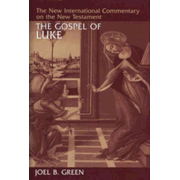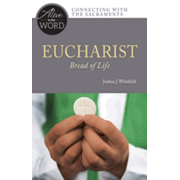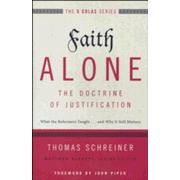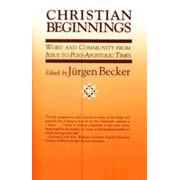OUR STUDY for this week comes from the prominent gospel
reading for Palm Sunday. The reading usually set aside for the day covers events
that span from the Last Supper to the Crucifixion. However, given the
comprehensive reading, for the sake of online brevity we concentrate here on
the earlier of the two. The scripture describing the Upper Room gathering reads
with consensus and conflict present. We hear from Luke…
And when the hour
came, he (Jesus) sat at table, and the apostles with him. And he said to them,
"I have earnestly desired to eat this Passover with you before I suffer;
for I tell you I shall not eat it until it is fulfilled in the kingdom of
God."
And he took a cup, and when he had given
thanks he said, "Take this, and divide it among yourselves; for I tell you
that from now on I shall not drink of the fruit of the vine until the kingdom
of God comes."
And he took bread, and when he had given
thanks he broke it and gave it to them, saying, "This is my body which is
given for you. Do this in remembrance of me."
And likewise the cup after supper, saying,
"This cup which is poured out for you is the new covenant in my blood. But
behold the hand of him who betrays me is with me on the table. For the Son of
man goes as it has been determined; but woe to that man by whom he is
betrayed!"
And they began to question one another, which
of them it was that would do this. A dispute also arose among them, which of
them was to be regarded as the greatest.
And he said to them, "The kings of the
Gentiles exercise lordship over them; and those in authority over them are
called benefactors. But not so with you; rather let the greatest among you
become as the youngest, and the leader as one who serves. For which is the
greater, one who sits at table, or one who serves? Is it not the one who sits
at table? But I am among you as one who serves.
You are those who have continued with me in my
trials; and I assign to you, as my Father assigned to me, a kingdom, that you
may eat and drink at my table in my kingdom, and sit on thrones judging the
twelve tribes of Israel.
Simon, Simon, behold, Satan demanded to have
you (all), that he might sift you like wheat.., but I have prayed for you that
your faith may not fail; and when you have turned again, strengthen your
brethren." (Luke 22:14-32)
Eat and Run, or
Don’t…
Here we have in Luke the inherited telling of the Last
Supper scene, but we see that the unfolding events differ slightly from the
other two gospels that recorded the gathering. To begin, let us first note
that all three records similarly describe that the disciples gathered in the
upper room with Jesus. However, it seems though Luke worked with some of
the same source material as used in Mark, minor scribal changes describing the sequence
of the evening’s conversation and its attending events are noteworthy.
In highlighting this,
we see that Luke told of the Eucharistic element consecration as occurring first
and the revealing of betrayal is placed second. This differs from Mark 14:18, in
that there we observe that Jesus was described as sitting with the disciples before
betrayal was voiced, before the consecration of the hallowed meal as his own
Body and Blood. As well, we note that the later written Matthew 26:21 (c.
85-90 A.D.) also records that he spoke of betrayal first. We are brought to especially
note that this occurred in Mark's text that was written several decades
earlier than either Matthew or Luke. Marks’s disclosure was then likely the
source for the writers of both subsequent gospels.
Therefore, we might rightly ask
the reason for the sequential change in Luke? Additionally, we take note that Matthew’s
text revealed that Judas was spoken of as a betrayer who was highlighted
with his own question… “Is it I, Master?” Jesus answered the question with the accompanying
response..., “You have said so.” This answer was apparently made by Jesus
early during the meal.
However, Luke initially
reveals no such conversation as to the betrayer’s identity, but the betrayer is
revealed at a later time to be Judas… after the meal. The revelation occurred in the very
next scene which was described as held in the Garden of Gethsemane.
 |
Gospel of Luke: New International Commentary on the New Testament By Joel B. Green |
We may ask, “Of what
importance is this sequence?” To answer, we consider that during the reception
of the Eucharist today, as many denominations understand… the meal is not just
a remembrance. These regard Holy Communion as a Sacrament instituted by God
himself… one that invokes the forgiveness of sins to those who participate in
faith. Therefore in Luke, the sequence as written portrays that all of the disciples including
Judas, received the Sacrament and its effect. Therefore all present received forgiveness.
We may wonder, “Was
the sequence deliberate? If so, “Why was this so important to Luke?” Was the
fact that even the much hated Judas was given grace, a subtle invitation to those
who had lapsed from the faith in his churches… those who had “lapsed” and fallen away
from the church during persecutions?
Whether Judas ate of the meal already served, or left immediately without receiving… is a matter of lost record. If not forgiven of sins, Judas met his self-inflicted death in a state that distances himself forever from God. However, if he carried forth his agenda thinking that he was a forgiven sinner who was forwarding his perceived vision for the Messiah, he may have left with the thought of forcing Jesus to publicly reveal himself as the proper leader of the Jews. Or, in keeping with Lutheran theology, if this is a proof text does it mean that Judas stood as we all are in this life... simultaneously sinner and saint?
Whether Judas ate of the meal already served, or left immediately without receiving… is a matter of lost record. If not forgiven of sins, Judas met his self-inflicted death in a state that distances himself forever from God. However, if he carried forth his agenda thinking that he was a forgiven sinner who was forwarding his perceived vision for the Messiah, he may have left with the thought of forcing Jesus to publicly reveal himself as the proper leader of the Jews. Or, in keeping with Lutheran theology, if this is a proof text does it mean that Judas stood as we all are in this life... simultaneously sinner and saint?
 |
Eucharist: Bread of Life By Joshua J. Whitfield |
Also consider in Luke, Jesus reminded those gathered about the reversal of who is the greatest…
demonstrating in example that he as the rabbi, was the One who was serving. He therefore set
a pattern for their future in ministry. We might speculate that since Judas
had already left the gathering by this time, and did not hear the teaching, his
absence determined his fall. He failed at working in this last endeavor.
Later, non-canonical writers wrote that Judas thought that he would force Jesus to reveal his station as Messiah. Additionally, the false “Gospel According to Judas” suggested that he and Jesus had it all planned from the outset. That particular text claimed that the disciple’s calling was to cause crucifixion… so our Lord would wrest power from the temple cult and Roman authority. However, with much canonical resistance, these latter theories and false gospels are not recognized by the authority of the Church.
Later, non-canonical writers wrote that Judas thought that he would force Jesus to reveal his station as Messiah. Additionally, the false “Gospel According to Judas” suggested that he and Jesus had it all planned from the outset. That particular text claimed that the disciple’s calling was to cause crucifixion… so our Lord would wrest power from the temple cult and Roman authority. However, with much canonical resistance, these latter theories and false gospels are not recognized by the authority of the Church.
Why the Conflict?
We may ask now why the conflict yet exists concerning Judas. We also may ask ourselves, “Why did the disciples argue competitively for
influential position in the coming Messianic reign? To answer, I think both the
sinfulness of Judas and the jealousies of the other disciples has been revealed to
us... so that our attention would fall firmly onto the singular salvation event as
planned by God. I contend that a theory that modern sociologists teach was at work,
wherein unfolding events occur within history out of either conflict
or consensus... or both. While consensus was certain between the Father and the Son, tensions
were indeed building in the band of disciples, and furthermore in ancient Jerusalem… toward
the focal point in all of history. The chaos revealed that Jesus,
the Son of God, had been anointed with divine consensus, toward his being singularly sacrificed for our salvation. No assistance
from sinful disciples was allowed to interfere. In certainty, each sinful and
argumentative disciple would fall away as the conflict progressed. You see, all...
like Judas… would betray our Lord.
 |
The Christian Left: How Liberal Thought Has Hijacked the Church By Lucas Miles |
I believe the revealing
scene for us in Luke thus comes to us in the detail given in the upper room
discourse. The conversational pinnacle occurred when Jesus talked with Simon
Peter. Note that Jesus had previously declared Simon as the “Rock”. After repeatedly
saying that he would suffer betrayal, our Lord told Peter that Satan would
“sift” them all… using the plural sense of “you” for those disciples present.
This instructs each of us about being judgmental concerning others… and dampens our
usual haughty case against Judas. All disciples were to be judged, therefore, and found in the same trespass as the betrayer.
In the very next breath, Jesus related to Peter that he had prayed for him singularly… stating “you” and “your faith”. The “Rock” would deny him three times before a rooster would crow, and yet through the power of the Holy Spirit, Peter would be the one to first keep faith… so to assist the infant Church as it moved into the new era of revelation.
So it is, that I believe that Luke portrayed all disciples as sinfully losing out when they initially picked sides and tried to sidetrack our Lord’s path amid his conflict with the powers of evil. This drama unfolding was all part of the “bait and switch” posed by God against satanic forces.
In the very next breath, Jesus related to Peter that he had prayed for him singularly… stating “you” and “your faith”. The “Rock” would deny him three times before a rooster would crow, and yet through the power of the Holy Spirit, Peter would be the one to first keep faith… so to assist the infant Church as it moved into the new era of revelation.
So it is, that I believe that Luke portrayed all disciples as sinfully losing out when they initially picked sides and tried to sidetrack our Lord’s path amid his conflict with the powers of evil. This drama unfolding was all part of the “bait and switch” posed by God against satanic forces.
 |
Faith Alone, The Doctrine of Justification: What the Reformers Taught...and Why It Still Matters By Thomas Schreiner |
You see, the disciples would all join Judas at least in subliminal betrayal. This occurred in the divine plan so that evil powers would erroneously believe that that they had surely thwarted God’s salvation.
Consequently, Satan got faked out! In that way, we see that only divine action accomplished by God through Jesus Christ formed any consensus as to the reality of the Resurrection.
Finally take note! Most
certainly this Resurrection truth revealed by Luke grew later to full
effect as he described the disciples on the day of Pentecost. This we note in the “Acts of
the Apostles”. In that written biblical history, he pointed out that those who betrayed..,
abandoned.., or crucified Jesus… the One who is, was and always will be the
Christ of God, stood finally united together with the Father in forgiveness given.
Together empowered, the disciples witnessed to others concerning what only God had mercifully finished. Sadly, Judas…. overwhelmed in selfish deceit, served as a bad example. In his theft and deceitfulness, he missed out on the grand purpose of that gracious mission. That, I view, was the real tragedy of his loss. Thus it is written, and so it is forevermore.
Drop in and see our personal witness videos...
May our Lord make your path into the kingdom a slippery slope!



No comments:
Post a Comment